
Your Pregnancy Guide
3rd Trimester
HealthNet: 317-957-2070
For OB/GYN, press 3
www.indyhealthnet.org
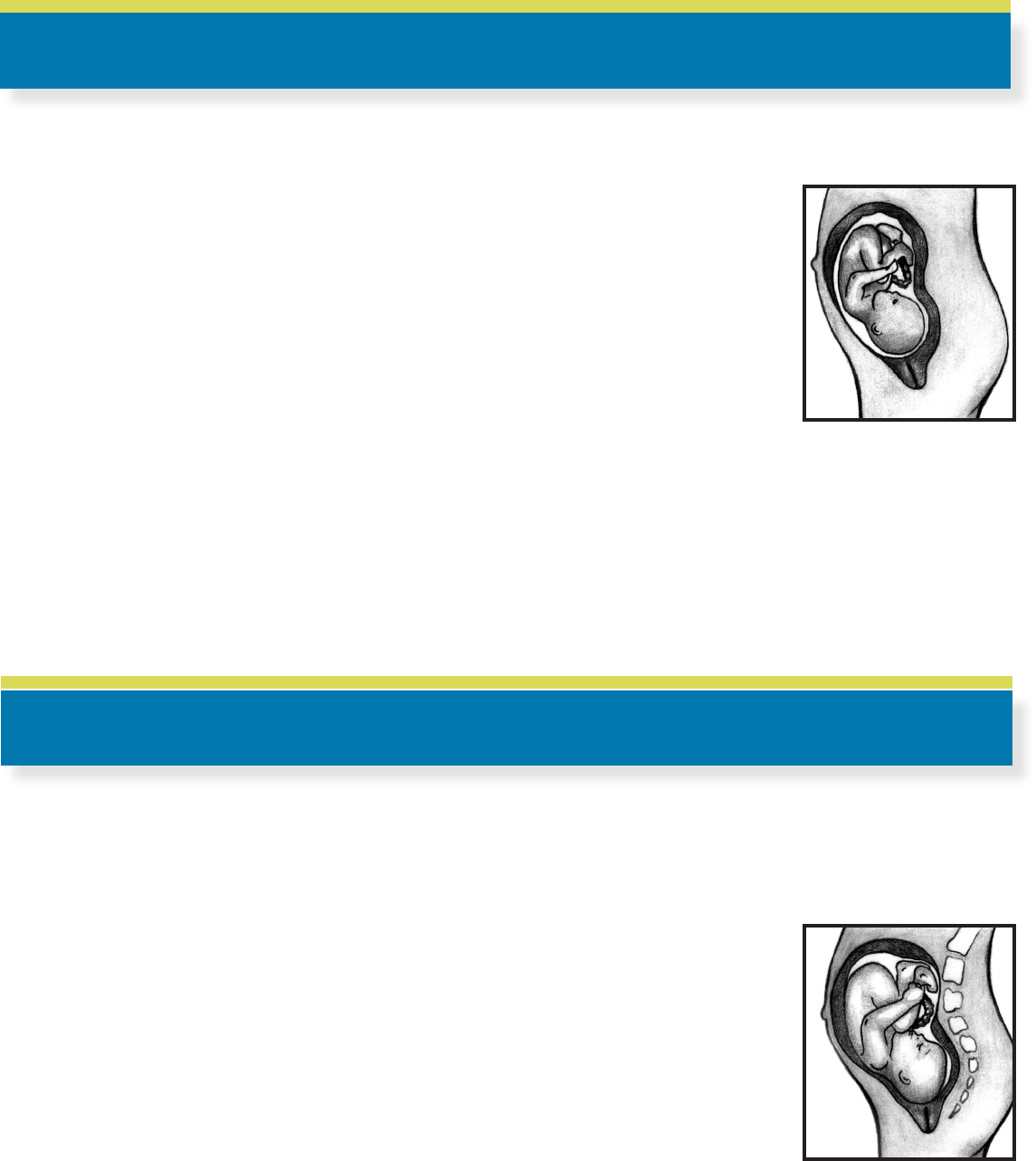
Your Baby:
• Can breathe, swallow, and hiccup
• Weighs about 2 ½ pounds
• About 13-15 inches long (the size of an eggplant)
You:
• Colostrum, or early milk might leak from your breasts
• Try to always lie on your side or tilted instead of on your back
• Could have stretch marks
• Should feel the baby kicking and turning over
Your Baby:
• Is very active
• Looks less wrinkled because fat has grown under the skin to keep the baby warm
• Weighs about 4 pounds
• About 16 inches long (the size of a squash)
You:
• Have a growing belly
• Might get tired
• Could have some pressure in the lower tummy
• Might need to go to the bathroom more often
• Could have some heartburn
• Might have: shortness of breath, constipation, varicose veins, leg cramps, or hemorrhoids
Week 28: How We Grow...Month 7
Week 32: How We Grow...Month 8
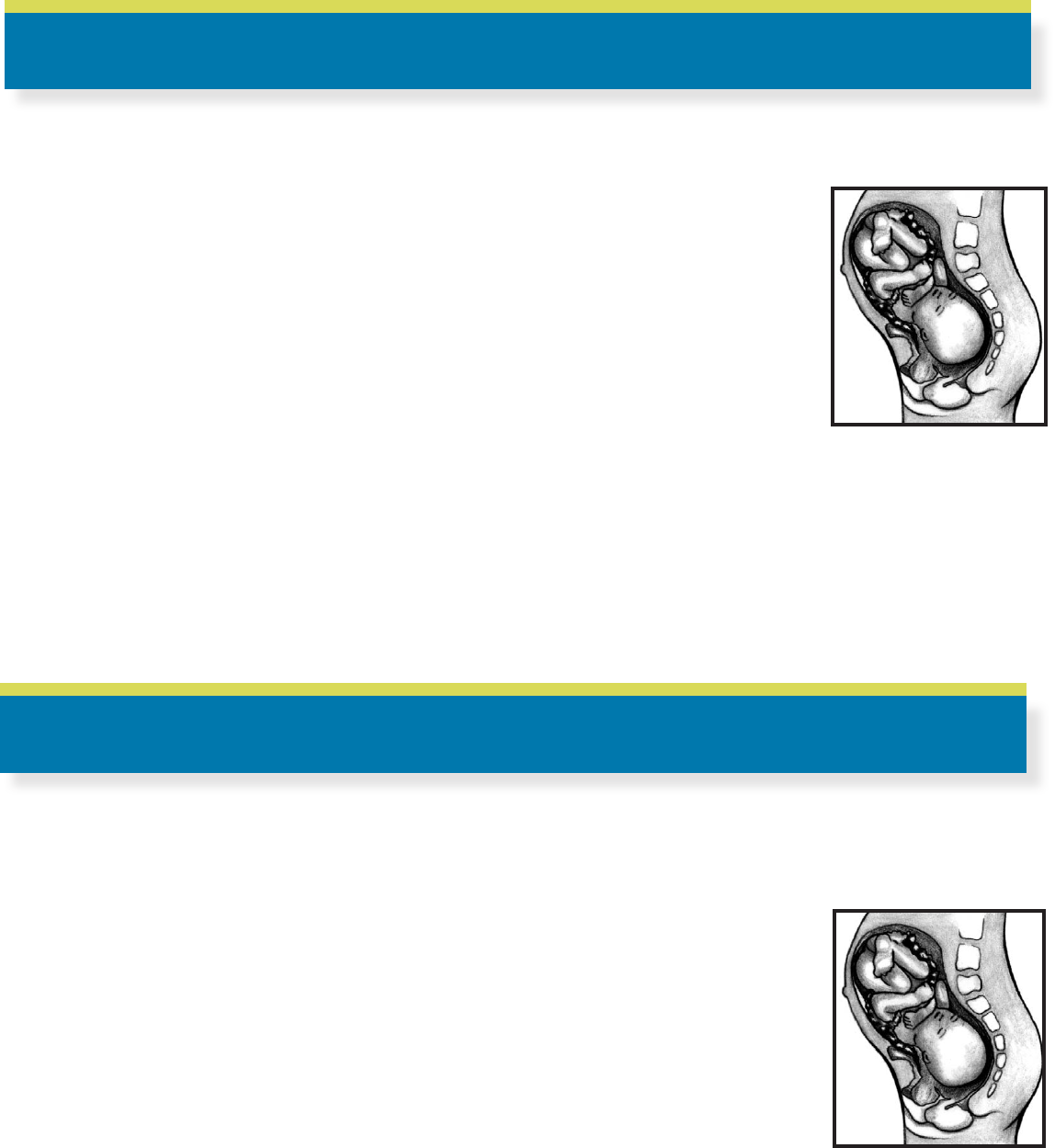
Your Baby:
• Growing about a ½ pound per week
• Has ngernails now
• About 18 inches long (the size of a honeydew melon)
• Should weigh between 5-6 pounds
You:
• Belly button might stick out
• Ankles might swell (you may notice this more at night)
• Random tightening of the uterus (this should go away with rest and drinking lots of water)
• Might be hard to nd a good position to sleep or sit
• May have heartburn
Week 36: How We Grow...Month 9
Your Baby:
• About 19-21 inches long
• Should weigh between 6 ½ - 8 ½ pounds at birth
• Sucks its thumb
• Can get hiccups
You:
• May feel tired
• Hips and pubic bone may ache
• May feel lots of pressure in your vagina
• Might notice more discharge in your underwear
• Could have a hard time sleeping at night
• May have more heartburn
Week 40: How We Grow...Month 10

Preterm labor happens when you start having contractions before 37 weeks. These contractions
could start labor before your baby is ready.
Signs of Preterm Labor
• Stomach pain or tightening that happens 6 times (or more) in 1 hour
• A heavy feeling on your vagina that comes and goes 6 times (or more) in 1 hour
• Water breaking (this might feel like a gush of uid or a constant trickle of uid)
• Feeling like the baby is balling up 6 times (or more) in 1 hour
If you have these signs, do this right away:
• Lie down
• Drink 2 large glasses of water over 20-30 minutes
• Have a small snack
• Feel for contractions (if you still have them every 5-10 minutes for an hour, call your health
center or go to the hospital to be checked)
It is normal to feel some contractions that don’t start labor. This could happen in the last 3 months of
your pregnancy.
You should call your health center
if your signs and symptoms do
not go away.
Preterm Labor

Fetal movement or kick counts measure your baby’s activity level. Your baby should move many
times every day. Do kick counts when you cannot remember the last time your baby moved or
feel like your baby is moving less than normal. Kick counts are a good way to see if your baby is
moving the normal amount. Most women start kick counts at 26 weeks of pregnancy.
Kick Counts
1. Ask your provider how often you should do kick counts.
2. Before you do kick counts, eat a healthy snack and drink a large glass of juice or water. Your baby
is more active after you eat.
3. Go pee.
4. Get a sheet of paper and pen.
5. Find a quiet, comfy place to lie down where you can see a clock.
6. Turn o the TV and phone.
7. Lay down on your side.
8. Relax.
9. Focus on your baby’s movements. Put one hand on your belly. If you don’t feel movement
after 40 minutes, turn on your other side.
10. Count the number of times your baby moves. Use the chart below.
11. Once you count 10 kicks or movements, you can stop counting.
12. If you feel less than 10 movements or kicks in 2 hours, call your provider.
Day Sunday Monday Tuesday Wednesday Thursday Friday Saturday
Date
Start Time
Kicks (up
to 10)
End Time
Fetal Movement and Kick Counts
Write down the number on the chart as you go, so you don’t lose track.
There should be at least 10 movements or kicks in 2 hours.

When to Call the Health Center
Most women have times when they are nervous about pregnancy. It is normal to be concerned
about the changes in your body.
Call your health center or after-hours nurse right away at 317-957-2070 if you
have:
• Not felt your baby move all day, or less than 10 movements in 2 hours
• Blurry vision or seeing spots, with a headache and swelling
• Headaches where Tylenol and rest don’t help, with swelling in your hands and face
• Backache, belly tightening up, and pelvic pressure. It feels like the baby is pushing down.
• A sudden gush of water or nonstop wetness
• Swollen, sore, or red area on your leg
Call the health center as soon as it opens if you have:
• Pain or burning when you pee
• A bad smelling discharge from your vagina or concerns about a sexually transmitted
infection
• Blood spots coming from your bottom when you have a hard poop
You can talk to your provider about these normal changes at your next visit:
• Swelling of the feet and ankles
• Backache (This is common during pregnancy - you can talk to your provider about
what to expect and tips to relieve the back pain)
Go to the Emergency Room right away if you have:
• Vomiting and diarrhea that lasts more than 24 hours, and you cannot keep down food
or liquids
• Vaginal bleeding like a period (light spotting after sex or a pelvic exam can be normal)
• Bad belly pain that does not go away
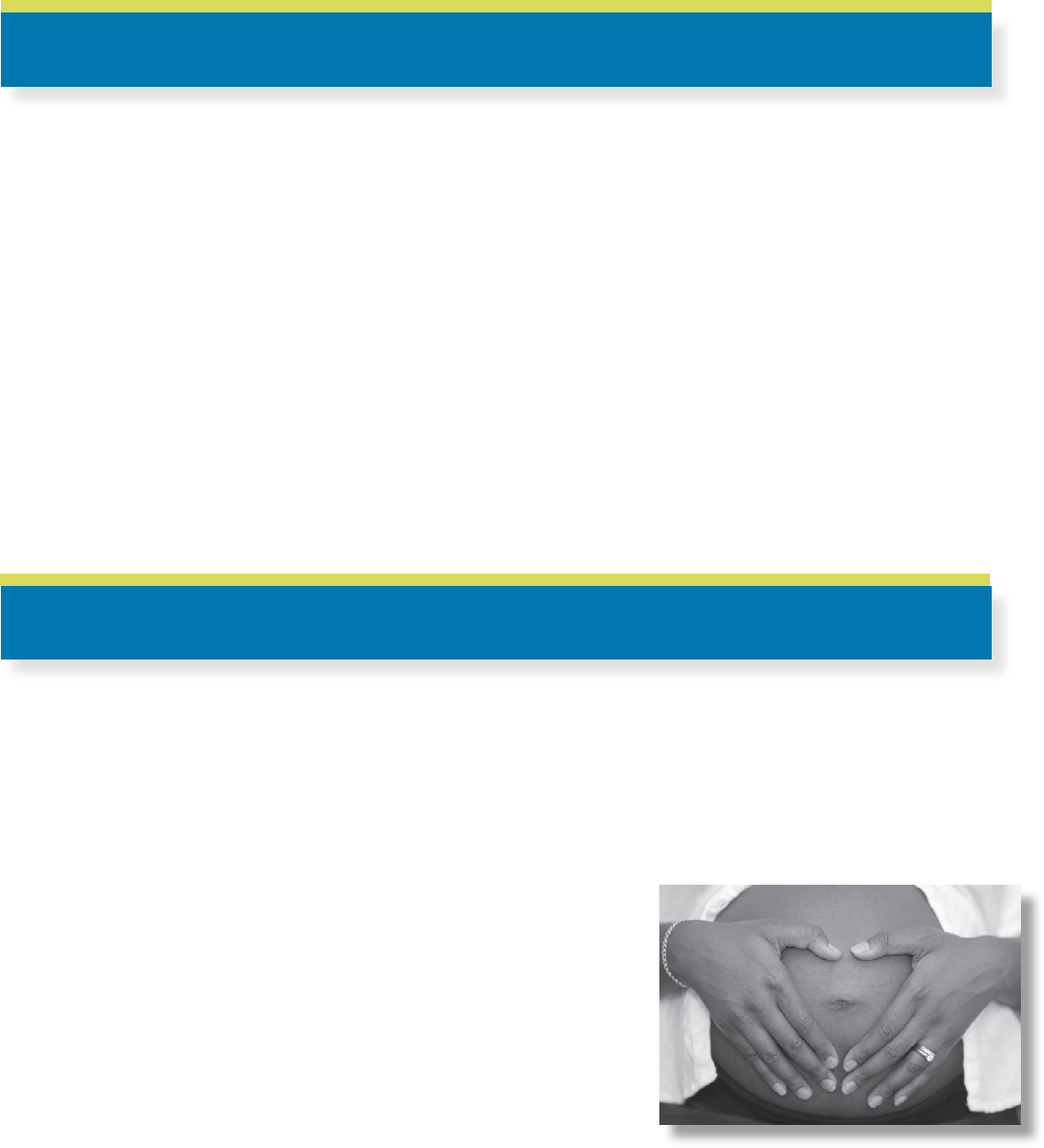
Prenatal Vaccines
Flu Shot
If you get the u while you are pregnant, you are more likely to get really sick and get pneumonia.
During u season, your providers suggest getting a u shot. This will not make you sick. It can help
you from getting a bad case of the u. A u shot will not hurt your baby.
Pertussis Vaccine
After 27 weeks, your providers would like you to get a booster shot against whooping cough
(Pertussis). Babies that get whooping cough can become very sick and some have died from it. The
best way to protect your baby is for you or any one around your baby to get a booster shot.
COVID-19 Vaccine
Because COVID is dangerous and easily spread, the CDC and The American College of
Obstetricians and Gynecologists strongly recommend that pregnant people get a COVID vaccine.
Pregnant people who get COVID-19 are at a higher risk for severe illness and adverse birth
outcomes. Talk with your provider to make the choice that is best for you and your baby.
Group B Beta Streptococcus (GBS)
What is GBS?
A kind of bacteria that starts in the intestine and is found in the vagina. It can cause serious illness
and even death in a newborn. The risk is very small. 10%-30% of women have this bacteria.
How does an infant get GBS?
GBS can pass from the mother to the baby during the last
month of pregnancy or during the birth process.
How do you test for GBS?
Around 36 weeks, you or your provider will swab from the
vagina to your rectum to see if GBS is present.
What if the GBS test is positive?
If you have GBS, you will get antibiotics through a small tube placed in your vein (IV) when
you are in labor. This lowers the chance of your baby getting sick from GBS.
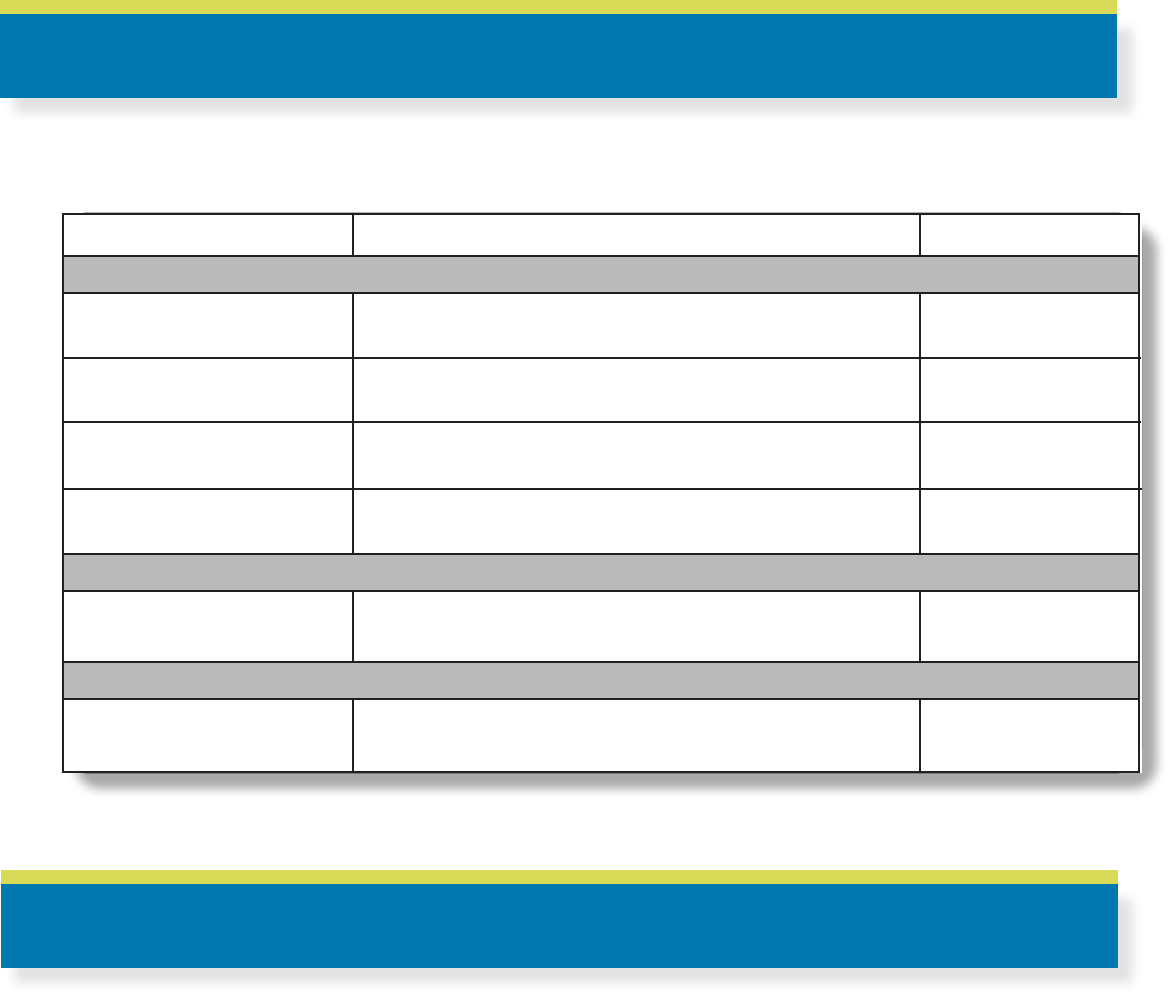
3rd Trimester Prenatal Tests
These tests are done to check your health. Some health issues can hurt your baby. If the tests show that
you have one of these health issues, your provider will work with you to keep you and your baby healthy.
Test
Why?
When?
Blood Tests
Blood Count (CBC)
HIV
Syphilis
Diabetes Screen
Urine Tests
Swab Tests
Gonorrhea, Chlamydia, and
Trichomonas
Group B Beta Strep
Looks for anemia (low iron which can make you feel tired)
and infection (sickness caused by germs)
To see if you have HIV (a blood virus that keeps your
body from ghting germs)
To see if you have syphilis (a germ that can make you
sick if left untreated)
To see if you have diabetes during pregnancy
To check for sexually passed infections that can hurt you
or your baby if left untreated
To see if you have group b beta strep (a germ that can
make your baby very sick)
1st visit, 26-28
weeks, at delivery
1st visit and at
36 weeks
1st visit, 28 weeks,
at delivery
1st visit and at
24-28 weeks
1st visit and 36
weeks
35-37 weeks
Rhogam (Rh-negative)
If your blood is Rh-negative you will need to be treated with medicine. During pregnancy, it is
normal for a small amount of the baby’s blood to enter your bloodstream. If your baby is Rh-
positive and you are Rh-negative, there will be a blood type mismatch. Your body may react
to your baby’s blood as a foreign substance and make antibodies against it. This can cause a
miscarriage, anemia, and problems in later pregnancies.
Your doctor will prescribe RhoGAM. When given at the right time, RhoGAM will prevent your
immune system from reacting to your baby’s blood. It is made from human blood and may carry
a risk of transmitting disease-causing agents.

Preeclampsia
Preeclampsia is a serious disease related to high blood pressure that can happen during
pregnancy or just after having a baby. Risks for moms are seizures, stroke, organ damage, and
death. Risks for your baby are being born too early and death.
Finding it early is important to you and your baby. Call your provider right away if you have any of
the following symptoms:
Types of Labor and Birth
Spontaneous Labor
This is when you go into labor on your own because your water breaks or you are having strong,
regular contractions that do not stop. It best when labor starts on its own. This usually happens
anywhere from 37 to 42 weeks of pregnancy. Your due date is just an estimate and rarely are
babies born on this day. Each pregnancy is dierent.
Induction of Labor
Induction is when we try to make your body go into labor with strong, regular contractions. There
may be some medical reasons that your provider may induce you before your due date.
Inducing labor may increase your risk of having a c-section, so we will only induce your labor for
very good reasons. Inducing your labor does not always happen in 1 day or work the rst time. If
your induction does not work, your provider may send you home.
There are several ways your provider may start your labor. They may use more than 1 way.
• Medicine placed in your cheek or vagina to soften the cervix and prepare it for labor
• Breaking your water
• Medicine, called Pitocin, given through an IV to start contractions
• Cervical ripening balloon, a device that is inserted and expanded to put pressure on the cervix
Cesarean (c-section)
If you have had a c-section before, you may choose to have one again. The other option is a
Vaginal Birth After Cesarean (VBAC). If you are interested in a VBAC, talk with your provider.
• Headache
• Seeing spots
• Gaining more than 5 pounds in a week
• Feeling nauseous or throwing up
• Swelling in hands, face, and feet
• Stomach pain in the upper right corner or upper
middle area of belly (not due to contractions,
tightening, your baby moving, or heartburn)

My Birth Wish List
People I want with me during labor and birth: ______________________________________________
__________________________________________________________________________________
Talk to your provider closer to your due date to ask what the latest visitor guidelines are.
Wear my own clothes during labor and birth
Have my partner take pictures
Bath/shower
Breathing techniques
Hot/cold therapy
Massage
Nitrous Oxide Gas (laughing gas)
Only available with a negative COVID test
No pain medicine
IV pain medicine
An epidural
A water birth
Bring music to listen to
Keep the lights low
Bring aromatherapy, like lotion or oils
Labor
1
View the birth using a mirror
Touch my baby’s head as it comes out
Keep the room quiet
Choose what position I want to push: ______________________________________________
Birth
2
Skin-to-skin right after my baby is born
Wait for an hour to have any medical procedure, unless it is urgent
Breastfeed as soon as I can
Have my partner cut the umbilical cord
See what my health care team is doing for my baby (giving medicine, checking vitals, etc.)
Have my partner stay with the baby at all times if I can’t be there
Breastfeed
Breastfeed and formula-feed
Formula-feed only
After Baby is Born
3
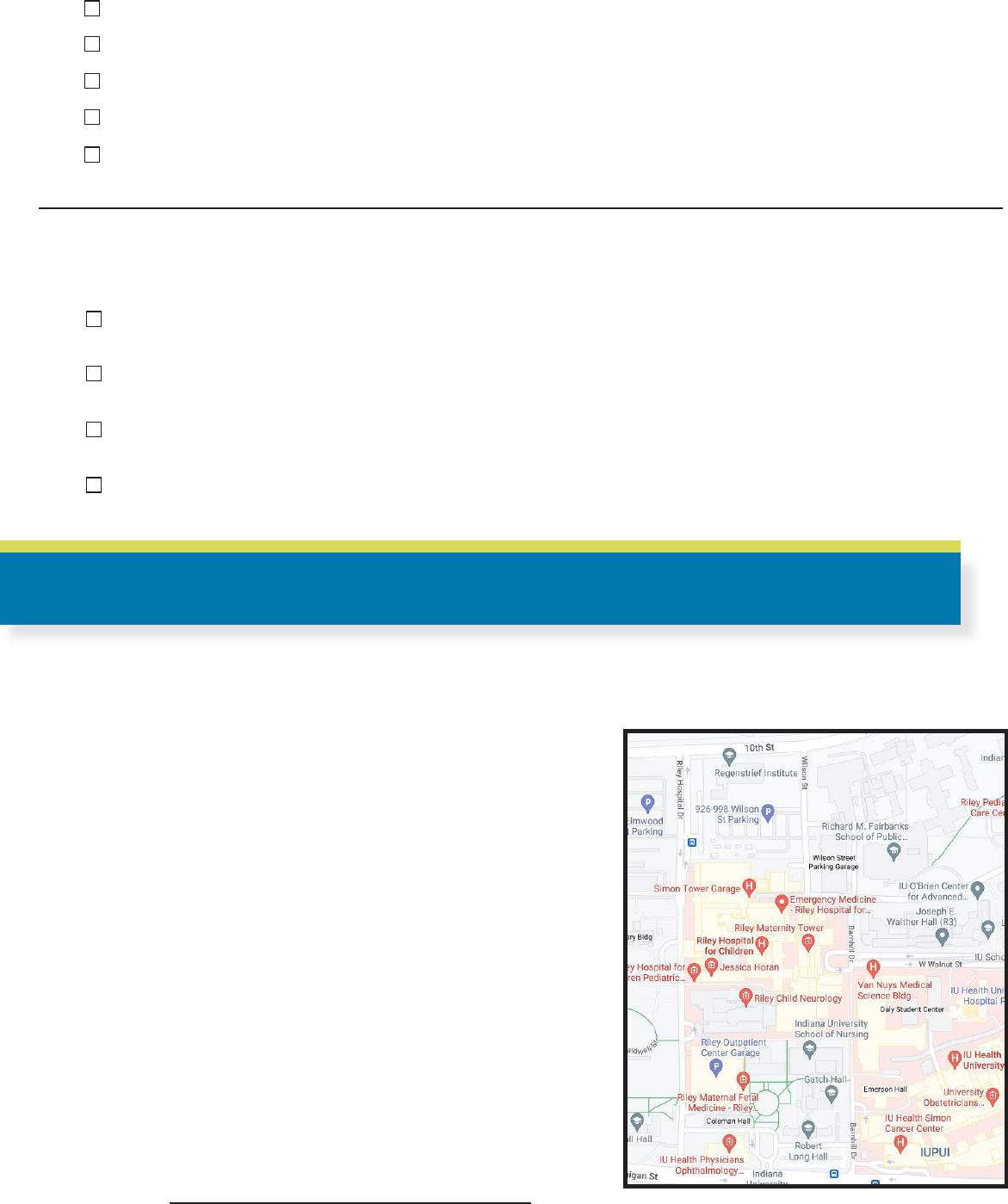
For Baby
4
Erythromycin eye ointment (to keep the baby’s eyes from getting infected)
Hepatitis B shot
Vitamin K shot
I want him circumcised
I do not want him circumcised
_____________________________________________________________
_____________________________________________________________
_____________________________________________________________
________________________________________________________
5
Other
Where We Deliver
Labor and Delivery as well as OB Emergency Services (OB Triage) are located in the Riley Hospital
Maternity Tower. This is a non-smoking campus. All patients going to Labor and Delivery or
OB Emergency Services should go to:
Riley Hospital Maternity Tower
702 Barnhill Drive
Indianapolis, IN 46202.
Parking
Free valet parking for patients is available at the roundabout
at the front of the building (* as shown on map). Once you
arrive, Patient Services will assist you up to the 2nd oor of
the Maternity Tower.
Guests will need to pay for parking in the parking garages
on the Riley Hospital campus. Guests can use the Simon
Family Tower Garage or the Riley Outpatient Center
Garage which are located
o Riley Hospital Drive.
To learn more about the Riley Hospital Maternity Tower,
please visit indyhealthnet.org/Where-We-Deliver/.
*

Hospital Packing Checklist
For Mother
Comfortable, loose tting clothes to sleep in
Bathrobe
Socks
Slippers
Underwear
Nursing Bra
Breast pads
Comfortable clothing and shoes
Toothbrush, toothpaste, shampoo, conditioner, soap, hairbrush
Chapstick (very helpful during labor)
Breath mints
Snacks
Contact lens case, contact solution, and glasses if you need them
Cell phone and important phone numbers
Insurance card, registration card, birth plan, driver’s license/state issued ID
Camera and or/video camera (you can take videos during labor and after birth, but it is
against Hospital Policy to video during delivery)
For Baby
Baby blankets
Clothing for your baby to wear home
Car seat - your baby cannot go home without this. You can purchase a car seat at the
hospital if you need to.
For Father
Social security card or ID with signature that is current
The hospital has a Safety Store where you can purchase baby items. To learn more, please visit
safetystore.iu.edu or call 317-274-6565.
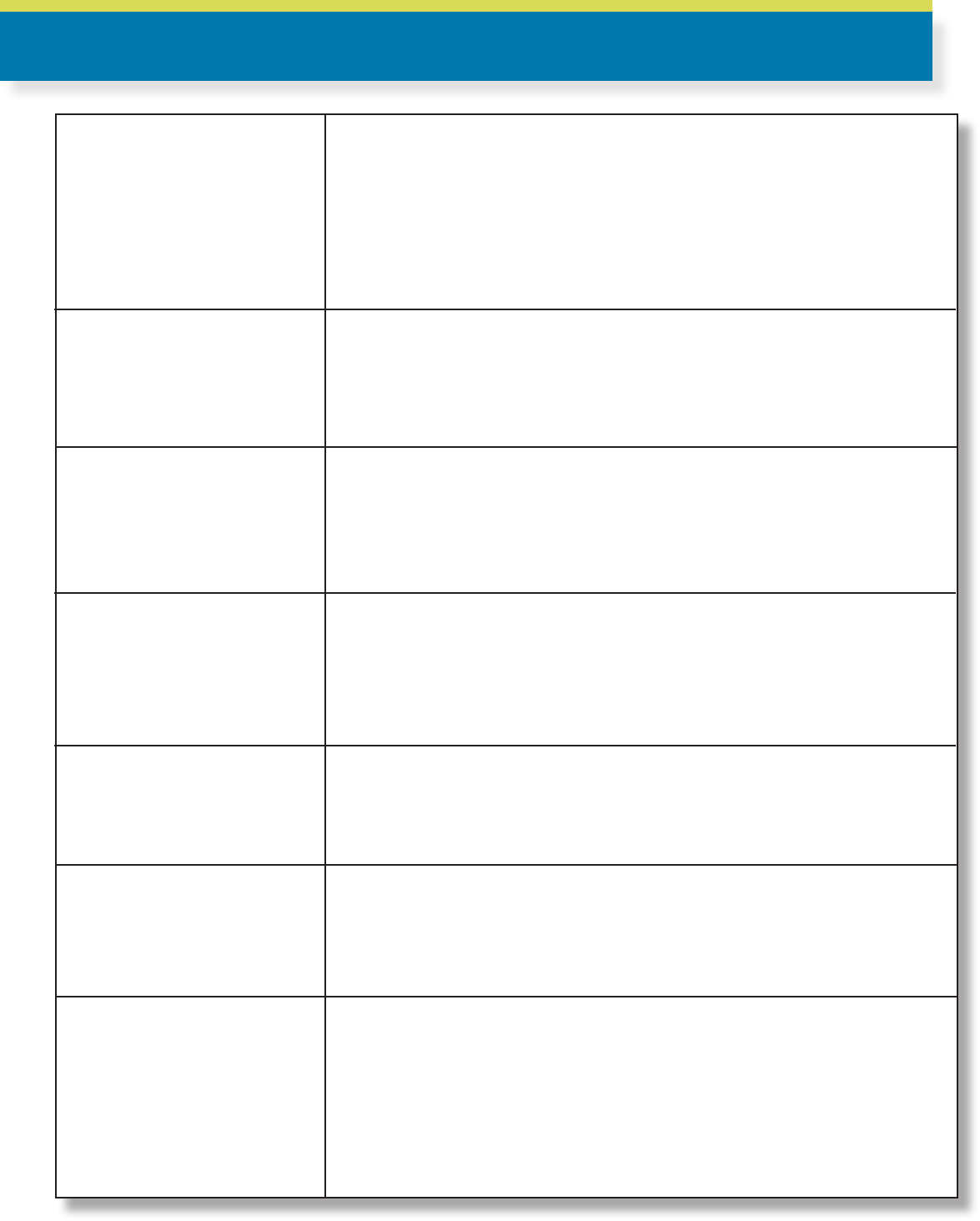
Tips for Coping with Labor
Change your position
• Hands and knees (rock back and forth and move your hips)
• Stand
• Sit in a chair
• Lean on the bed (sit on a birthing ball and let your upper
body rest on the bed)
• Use a squat bar that we can connect to the bed
• Create your own position
Sit on a birthing ball
• You can bounce or rock on a birthing ball
• Helps lessen back pain
• Gets the baby into a good position for birth
Back massage
• Something your support person can do for you
• Getting a back rub helps relax your muscles which may
reduce pain
Water or birthing tub
• Taking a shower or oating and changing positions in a tub
can help lower pain
Intravenous (IV)
pain medicine
• You will still feel contractions, but they might feel less
strong. Many women can fall asleep between contractions.
Epidural
• A pain medicine doctor will put a small tube in your back that
gives you medicine all through your labor
• You are numb from the breast down and will not be able to get
out of bed
• The medical team will check the baby’s heart rate all the time
• A pain medicine doctor will check on you while it is in your back
• You will still feel pressure, but it will help with pain
Nitrous Oxide
(laughing gas)
• You must have a negative COVID test to get Nitrous Oxide
• Inhaled through a face mask before and during a contraction
• Helps you to relax and cope with pain

Using Water during Labor and Birth
Why do some women choose to labor in a tub?
• Feel lighter in the water
• Better blood ow in mother
• Can speed up labor
• More feeling of control
• May help lower pain
What are the side eects of using a tub?
• Might slow labor if used too early
• You and your baby could get too hot or too cold
• You might have a higher risk of infection
What could stop you from using a tub?
• Having an epidural in your back
• Baby’s heart rate needing to be watched all the time
• Heavy vaginal bleeding
• Signs of an infection (like a fever)
• Hepatitis or HIV infection
• Preterm birth (3 or more weeks before your due date)
• Being very overweight or health issues like diabetes or high blood pressure
• Ask your provider if there are other reasons you may not be able to use a tub
Planning to use a tub during labor or birth?
• Talk to your provider
• Sign a consent form
• Talk with your support person to discuss your plans
• Try to take a childbirth education class. HealthNet has classes you can take.
• Know that you may need to get out of the water if your provider asks you to
• Tubs are oered on a rst come, rst serve basis
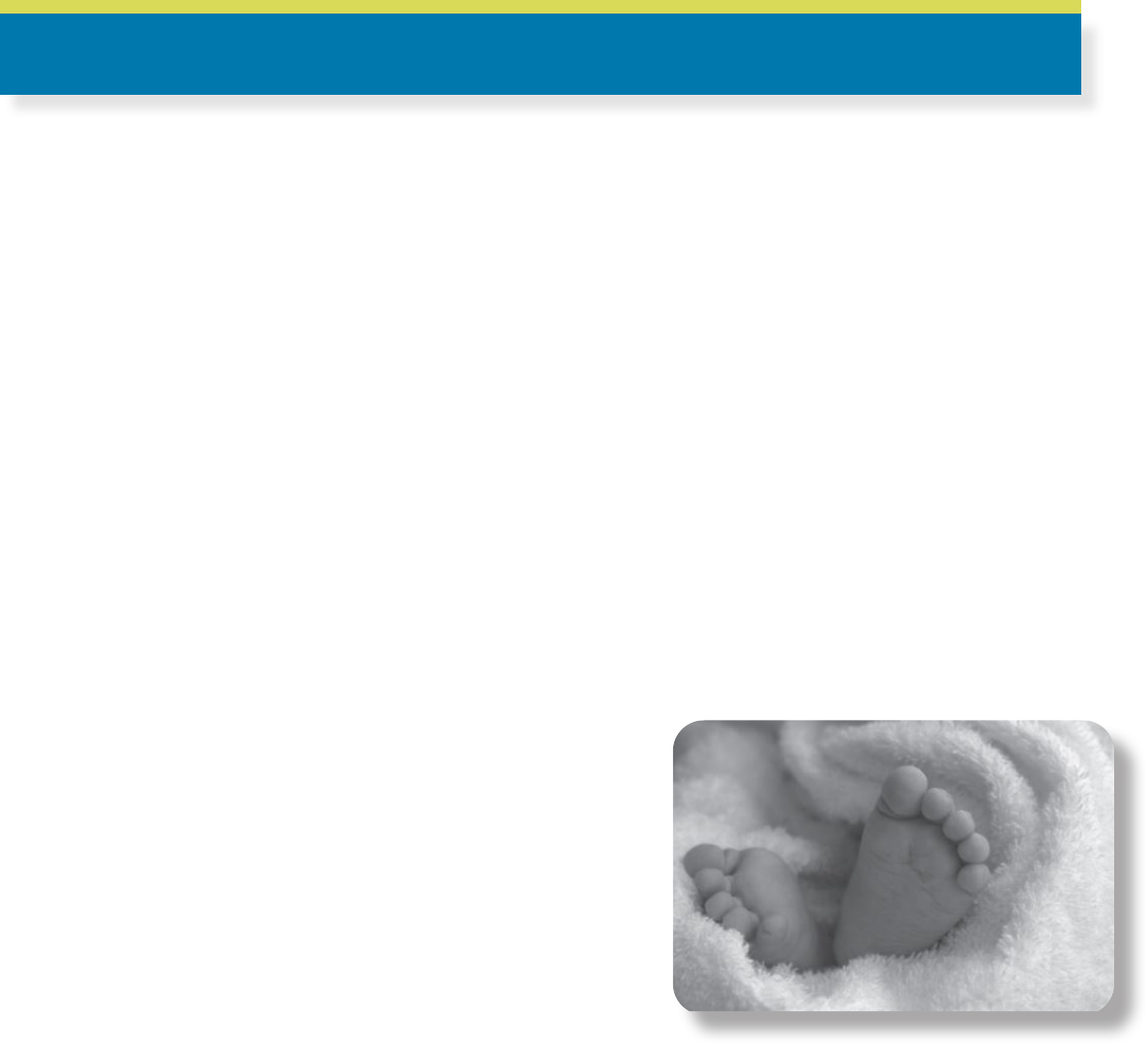
While You Are in the Hospital
Visiting Rules:
• Ask your provider about the most recent visitor guidelines.
• Once your baby is born, you will be moved to another room. Only 1 person is allowed to stay
with you overnight.
Monitoring the Baby:
• When you arrive at the hospital, you will be hooked up to a monitor that shows the baby’s
heart rate and if you are having any contractions.
• When your provider decides your baby’s heart rate is ok and it’s safe for you and your
baby, sta may take the monitors o. This will make it easier to walk and use the bathroom.
• Any time you get medicine, you will be placed back on the monitors to watch your baby’s
heart rate.
Leaving the hospital with no problems:
• Vaginal birth: 1-2 days
• C-section: 2-3 days
Other items:
• To take your baby home, you will need to have a car seat.
• WIC and birth records will contact you after your baby is born.
• To put the father’s name on the birth certicate you must bring bring proof of your marriage
and the father must bring a valid ID and sign a Paternity Adavit.
• For safety reasons, your baby’s name at the hospital will always match your last name.
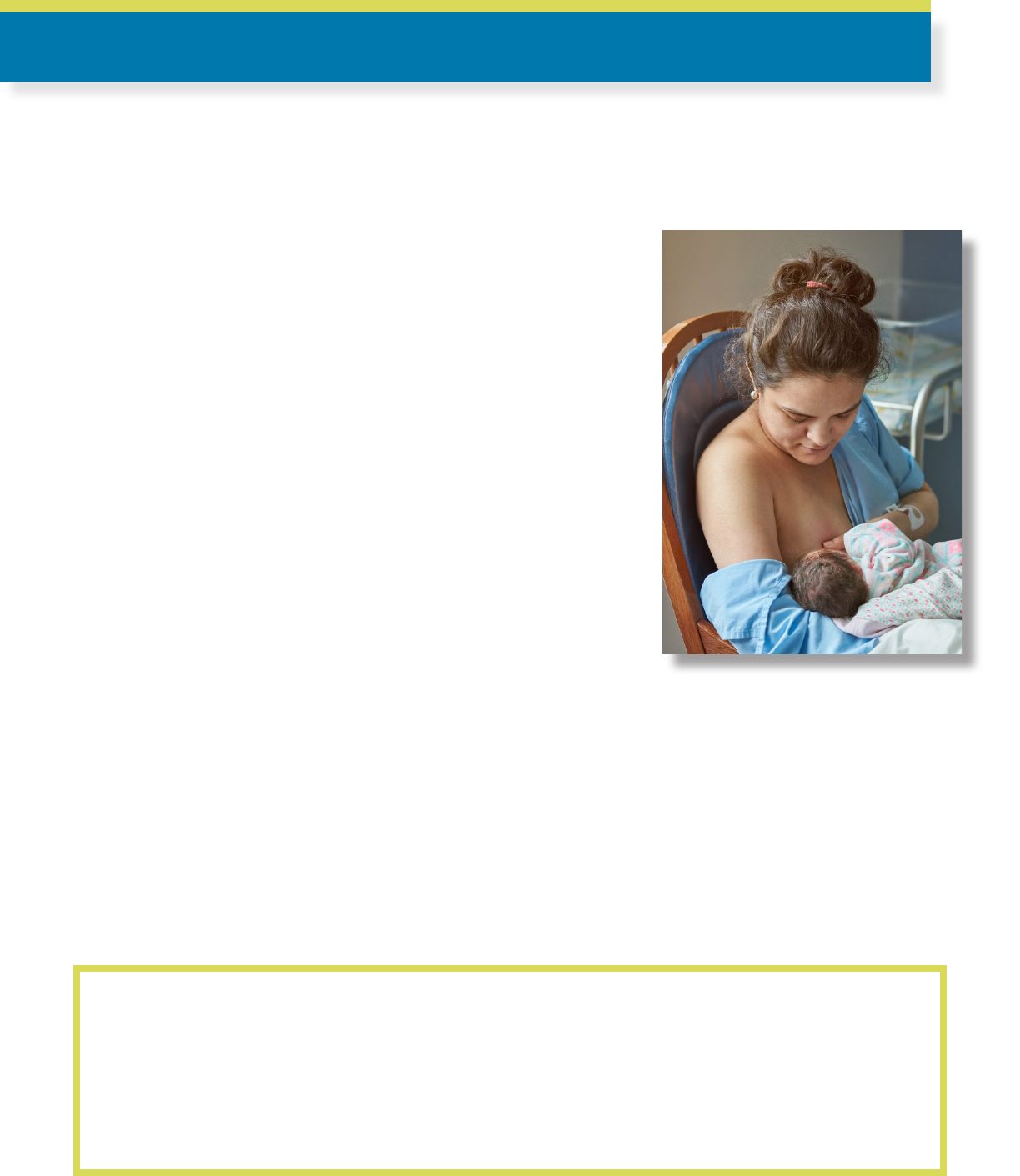
Breast milk is the best source of nutrition for your new baby. Breast milk also has important health
benets for babies born too early. You should start breastfeeding within the rst few hours after birth.
Colostrum
Colostrum is the rst milk you make. It is easy for your baby to
digest and produced in just the right amount for your baby’s small
stomach. Colostrum is a gold or yellow liquid rich in nutrition and
healthy antibodies that help protect your baby from infections.
During this time, your breasts will not feel full because of the small
amount your body will produce.
Milk supply
Frequent breastfeeding (or pumping) helps your body make more
milk and meet your baby’s needs. During the rst few days after
birth, your baby will be eating 8 to 12 times in 24 hours.
Don't give your baby formula unless your provider tells you to for
medical reasons. Feeding your baby formula won't make them
sleep better and can lead to a low milk supply. In about 1-3 days
after birth your milk will change and increase in amount. This is
when you start making “mature milk.” Feeding your baby often in
these early days will help you make the amount of mature milk
your baby needs.
Cluster Feeding
Cluster Feeding is when your baby feeds close together at certain times of the day. It is very common
in newborns. It usually happens in the evening, but each baby is dierent. Usually your baby will have
5-10 feedings over a 2-3 hour period, followed by 4-5 hours of deep sleep.
The length of each feed also varies (generally between 5-20 minutes). You should continue feeding
your baby as long as they are actively suckling and swallowing.
Importance of Early Breastfeeding
Even though breastfeeding is a natural process, it is normal for it to feel
awkward at rst. Many moms have questions or concerns about breastfeeding.
At the hospital, all breastfeeding moms are seen by a Lactation Consultant
(a breastfeeding expert) who is there to help with these concerns.

Circumcision is when the foreskin around the end of the penis is surgically removed. Circumcision
only takes a few minutes. During circumcision:
• The penis and foreskin are cleaned.
• A special clamp is attached to the penis and the foreskin is cut and removed.
• After the procedure, gauze with Vaseline® is placed over the wound to protect it from rubbing
against the diaper.
It is your choice if you want to have your son circumcised. It is not required by law or hospital policy.
Talk to your provider about the risks and benets so you can make the best decision for you and your
son.
Circumcision
It’s a good idea to start looking for a provider for your baby in the 3rd trimester. HealthNet has a wide
variety of pediatric providers who can take care of your baby.
HealthNet’s Pediatric & Adolescent Services can provide you and your family with the following
services:
• Well-Child Care: Newborn care, well-baby and toddler care, including childhood shots
• Sick-Child Care: Same day appointments available for urgent needs like u, ear infections,
rashes, respiratory illness, colds, sore throat, fever, minor cuts and scrapes
• School-Age and Adolescent Physicals: Physical exams required for school, sports, and daycare
• Ongoing Conditions: Care for asthma, allergies, diabetes, and other chronic issues
• Behavioral Health: Services for attention decit disorder (ADD), mental health, and behavior
concerns
• Support Services: Pediatric Psychologist, Social Workers, Dietitian, Eye Care, Dental Care,
and Healthy Families
Choosing a Provider for Your Baby
Scan the QR code to learn more about our
Providers or visit www.indyhealthnet.org and
select “Find A Provider.”
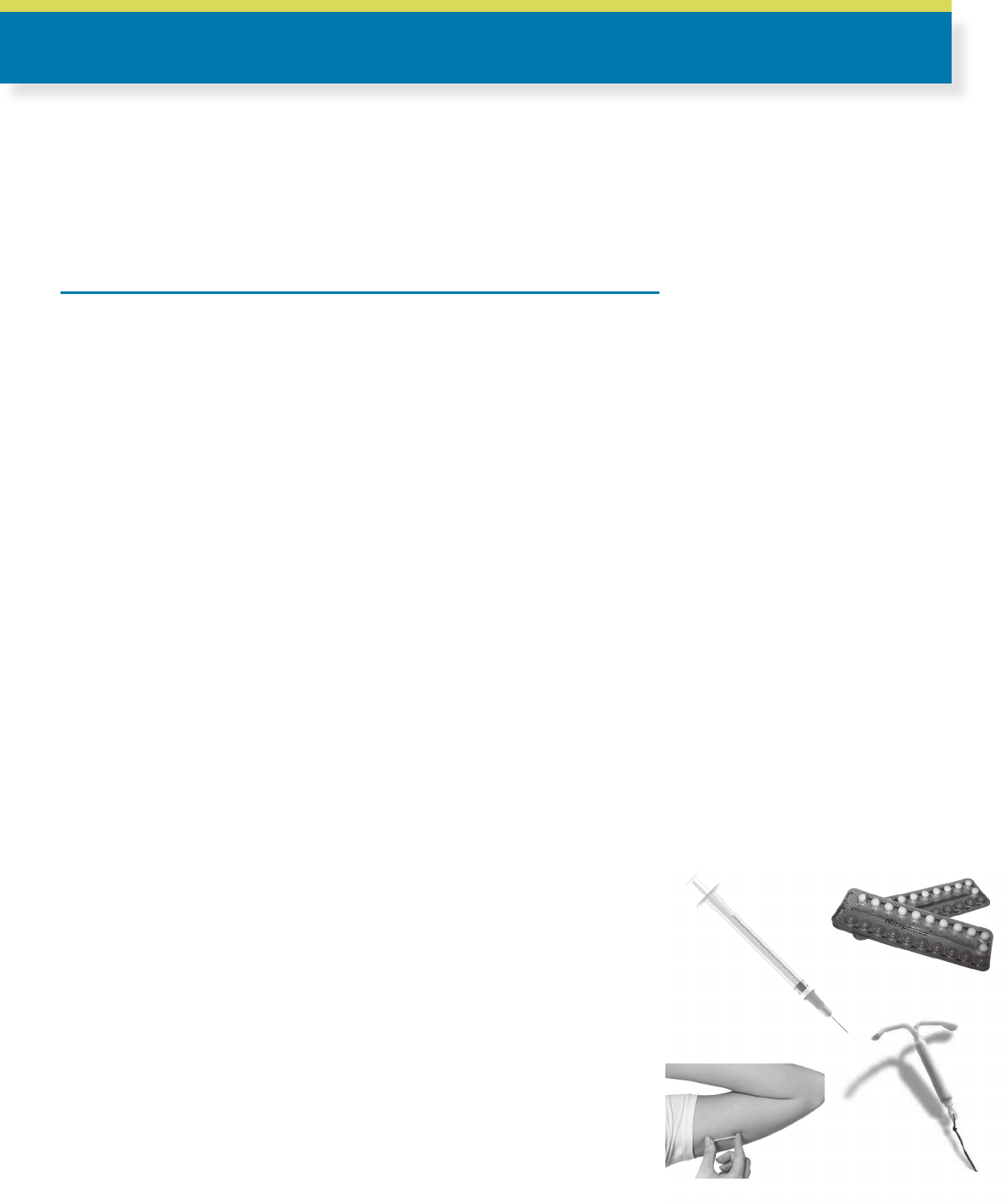
Birth Control Options After Pregnancy
Any time you have sex without birth control, you can get pregnant. This is true even if you just
had a baby, are breastfeeding, or don’t have normal periods. It is a good idea to think about
birth control while you are pregnant so you can make the best choice to prevent unwanted
pregnancies. Talk to your provider about your options and what is best for you.
Birth Control Options for Breastfeeding Moms
Progesterone pill (the mini-pill)
• Has a small amount of hormone
• Usually started 4-6 weeks after you have had your baby
• Take this pill at the same time every day
Depo Provera (the shot)
• You must get it every 11-13 weeks in your provider’s oce
• You can get this shot before you leave the hospital or wait until you see your provider
• You may have irregular bleeding and feel more hungry
Nexplanon
• A small rod that your provider places under your skin in your arm
• It lasts for 3 years
• You may have irregular bleeding, but that is normal and not harmful
• This can be put in place at the hospital before you leave or at your health center
Hormonal or Progestin IUD
• A small, plastic T-shaped device that your provider
places in your uterus
• It can be left in place for up to 3-7 years
• You may have irregular bleeding, but that is normal and
not harmful
• It is put in place and taken out by your provider
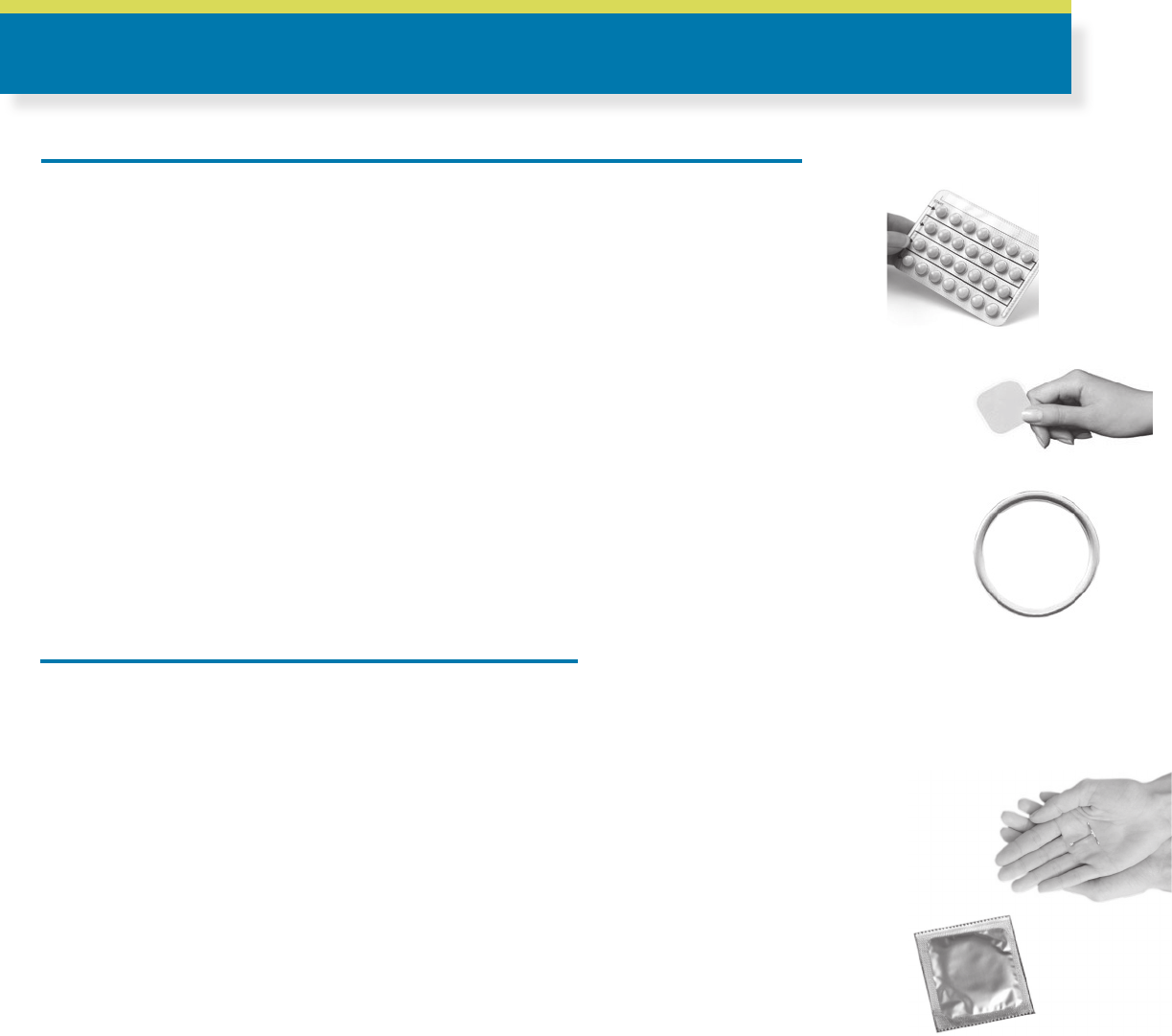
Birth Control Options After Pregnancy
Vaginal Ring
• Put this small ring (that is exible and soft) in your vagina 1 time a month
• Leave the ring in for 3 weeks then take it out on the 4th week to get your period
Birth Control Options for All Moms
Condoms (free at all HealthNet center - just ask!)
• The only birth control that lowers your chance of getting a sexually transmitted infection (STI)
• Use a new condom for every sex act to prevent pregnancy and STIs
Permanent birth control
• Tubal Ligation (surgery where the fallopian tubes are cut or blocked)
• Vasectomy (surgery where a male can have a cut or seal in his testicles to
prevent sperm from getting out)
Paragard IUD (intrauterine device)
• A small T-shaped device made of copper that the provider places in your uterus
• It can be left in place for up to 10 years and is put in and taken out by your provider
• You will have regular periods since this method does not have hormones
Birth Control Options for Formula Feeding Moms
The Pill
• Take it everyday at the same time
• You should have a period during the last week of the pill pack
The Patch
• Wear this small patch on your arm, back, butt, or lower belly
• Change your patch 1 time a week for 3 weeks, always on the same day
• Take the patch o for the 4th week to get your period
Phexxi (prescription vaginal gel)
• Must be used right before or up to 1 hour before each act of vaginal sex.
• Eective right away and lasts up to 1 hour
• You must use another dose of Phexxi every time you have vaginal sex (like using a new condom)

Visit Notes
